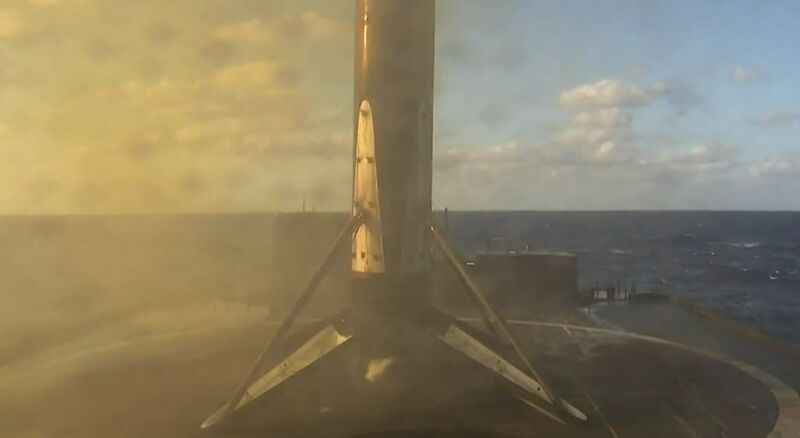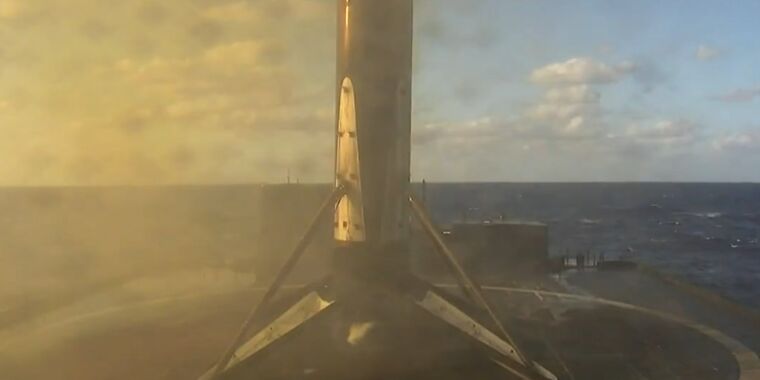
SpaceX webcast
SpaceX launches have become extremely routine. On Tuesday evening, SpaceX launched its 42nd rocket of the year, carrying yet another passel of Starlink satellites into orbit. Chances are, you didn’t even notice.
All the same, the cumulative numbers are mind-boggling. SpaceX is now launching at a rate of one mission every 2.7 days this year. Consider that, from the mid-1980s through the 2010s, the record for the total number of launches worldwide in any given year was 129. This year alone, SpaceX is on pace for between 130 and 140 total launches.
But with Tuesday evening’s mission, there was a singular number that stood out: 300. The Falcon family, which includes the Falcon 9 and Falcon Heavy boosters, recorded its 300th successful first-stage landing.
Recycling lots of rockets
That is a lot of booster landings, and significantly, they all occurred in less than a decade. SpaceX did not successfully land its first Falcon 9 booster until the 20th overall flight of the rocket. This happened with the ORBCOMM-2 mission on December 22, 2015, when the first-stage booster returned to a pad near the launch site. The first drone ship landing occurred a little more than four months later.
In the fleet’s lifetime, then, SpaceX has landed about 85 percent of the Falcon rockets it has launched. These days, more than 90 percent of all its missions launch on previously flown boosters. So rocket recycling is totally a thing.
There are a couple of other ways to look at the significance of the number 300. The first is in materials saved.
Landing 300 rockets means SpaceX has preserved 2,700 Merlin rocket engines. In round numbers, the dry mass of a Falcon 9 first stage is about 50 metric tons, so the landing of all these rockets has prevented 15,000 metric tons of metal and other materials from being dumped into the oceans—the equivalent, in mass, of about 100 residential homes.
Only a handful of rockets have ever launched more than 300 times, and they are all Russian. Several different Soyuz variants have launched over the years, with the Soyuz-U the all-time champion with 786 launches, followed by the Kosmos-3M booster with 445 launches and the Proton-K booster with 211 launches.
Among active rockets, there are really no competitors after the Falcon 9. The Russian Proton-M booster, which is nearing retirement, has 115 launches, the US-made Atlas V rocket has 99 launches, and the Chinese Long March 2D rocket has 89 launches.
Forever Falcon 9?
A fun parlor game is to guess whether the Falcon 9 rocket has a chance to unseat the Soyuz booster as the most-flown rocket of all time. Across all of its variants and dating back to its debut in 1966, the Soyuz rocket has launched more than 1,700 times. Nearly six decades on, it’s still going, and the Soyuz will likely continue to fly a dozen missions or so per year for much of the rest of this decade, if not beyond. Although the Russian space program repeatedly talks about replacing the Soyuz with a newer line of rockets, such boosters remain firmly on the drawing board.
As for the Falcon 9 rocket, across its variants, the booster has launched nearly 350 times now. At this rate, it might be expected to surpass the Soyuz in the middle of the 2030s.
Of course, the Falcon 9 rocket won’t continue at this rate. At some point in the next year or two, SpaceX’s significantly larger Starship rocket will begin launching Starlink satellites. That will remove some of the demand from the Falcon 9, although the smaller booster is likely to continue flying for the foreseeable future, likely through the 2030s at least.

